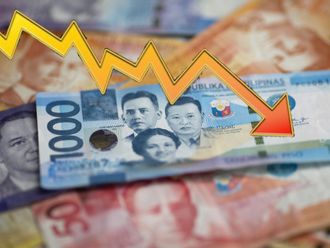
In these last four years, the OPEC+ group has succeeded - remarkably - in stabilising oil prices at above $80 per barrel. This has provided all oil producing and exporting countries with fair returns, enabling them to finance development projects and achieve optimum growth.
The success is attributed to the solidarity among oil producers and adherence to agreed-upon production quotas. The commitment rate has even exceeded 100 per cent at times due to various factors, including natural, climatic, and maintenance-related.
Despite the continuous attempts by consuming countries to influence prices and reduce them using all means, including speculative trades, the strength of the cohesion within OPEC+ countries was enough to maintain price levels, despite occasional fluctuations from time to time under the influence of economic growth dynamics and demand in the main consuming countries, especially China, as well as the volume of US oil stocks, which vary from time to time.
In the past, there has been a frequent emphasis on the need to maintain commitment to production quotas, given the global oil market is going through a particularly sensitive phase during which it is witnessing sharp fluctuations as a result of the gradual recovery of the global economy after the turmoil from COVID-19, coupled with difficulties faced by some major economies, as well as wars and numerous crises that followed the recovery period from the pandemic..
The commitment demonstrated by the OPEC+ countries and their keenness to stabilise production and price was impressive. Despite some inherent contradictions characterising the relationships among group members, they have managed to maintain a minimum level of solidarity and commitment.
Violations start to show up in oil production
After four years of adherence to production quotas, some violations have recently emerged. These will have significant negative results in maintaining current price levels, which may fall to levels that will represent a major loss for all member countries. Even a drop to below $50 per barrel.
The scale of the violations is considerable, amounting to 2.280 million barrels per day, with Iraq alone accounting for 52 per cent of this figure. Iraq plans to increase its oil production from 4.6 million barrels per day currently to 6 million barrels per day.
If the number of violations by other countries increase through higher production above approved quotas to catch up with the countries that preceded them in the violations, oil prices may fall to $ 30 per barrel, particularly if Trump wins the election as he adopts the policy of increasing oil production in the US. This scenario has happened several times in the past decade.
In this case, countries that have begun not to adhere to production quotas will, like other producing countries, face the loss of more than half of their oil revenues. This means increases above production quotas will not compensate for this significant decline in revenues, leading to severe economic crises, a decline in growth rates, and deteriorating economic conditions.
Maintain production quotas
It is prudent to reconsider the excesses in production quotas, first to preserve the unity of OPEC+ countries and gains achieved over the past four years. And second, to avoid exposing their economies to unnecessary difficulties.
This has created a sort of understanding by some of the violating countries, which announced that they will adhere to their production quotas starting this month. However, no assurances of recommitment have yet been issued by the largest violators.
The interests of member states and their economic futures require full commitment to production quotas to avoid strong shocks to the fragile and volatile oil markets. Now, more than ever, it is essential to establish a heightened unity of intent among the OPEC+ countries.
Through this, fair prices can be maintained, thereby achieving the collective interest of all member countries. This is simply because disintegration of the group would lead to chaos in the oil markets and a significant drop in prices, resulting in huge losses to all.













